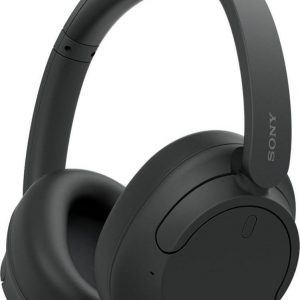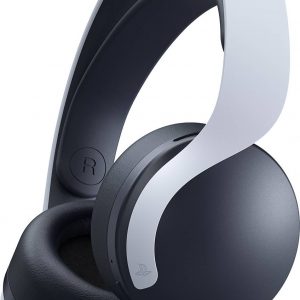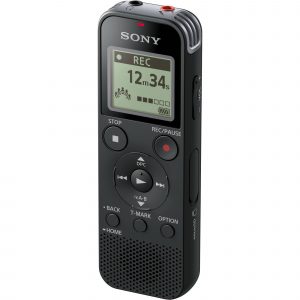MXL 770
Rated 4.50 out of 5 based on 2 customer ratings
$66.99
Unleash your creative potential with the MXL 770, a dynamic and high quality microphone designed to capture your sound with extreme detail and clarity.
Description
The MXL 770 microphone is a versatile, affordable microphone that provides professional-level audio quality for a wide range of recording applications. This condenser microphone is capable of capturing the nuances of vocals, acoustic instruments, and other sources with impressive accuracy and clarity.
One of the key features of the MXL 770 mic is its large diaphragm capsule, which allows it to capture a broad range of frequencies with exceptional sensitivity. This makes it ideal for recording everything from intimate performances to full-band sessions, as well as podcasting, voiceover work, and other audio applications.
The MXL 770 microphone also offers a high-quality FET preamp, which helps to deliver a clean, transparent sound with plenty of detail and depth. The microphone’s low self-noise and high SPL handling capabilities further enhance its versatility, enabling it to handle anything from quiet acoustic ballads to loud, powerful rock tracks.
Another advantage of the MXL 770 mic is its sturdy, durable construction. The microphone features a rugged metal body and grille, as well as a shock mount to help minimize handling noise and vibration. This makes it ideal for both studio and live performance settings, where it can withstand the rigors of regular use without sacrificing sound quality.
Overall, the MXL 770 microphone is a fantastic choice for anyone looking for a high-quality, reliable microphone that won’t break the bank. Whether you’re a professional recording engineer or just starting out, this versatile and affordable microphone is sure to meet your needs and exceed your expectations.
Handheld Microphones, Instrument, Singing
MXL 770 properties
| Product name |
770 |
| Type |
Microphone |
| Placement for Microphone |
Handheld Microphones |
| Suitable For |
Instrument, Singing |
| Polar Patterns |
Cardioid |
| Microphone Type |
Condenser |
| Wireless |
No |
| Type of Instrument |
Keyboard Instruments |
| Colour |
Black |
| Height |
15.8 cm |
| Width |
5.9 cm |
| Weight |
453.59 g |
Frequently Asked Questions:
How do I adjust the sensitivity settings on my MXL 770 microphone for optimal sound quality?
To adjust the sensitivity settings on your MXL 770 microphone for optimal sound quality, follow these steps:
1. First, make sure that your microphone is plugged into a compatible preamplifier or audio interface with phantom power enabled.
2. Locate the trim knob or potentiometer on the back of the MXL 770 microphone. This knob controls the sensitivity of the microphone's output signal.
3. Turn the trim knob clockwise to increase the sensitivity, which will make the microphone more sensitive to sound and produce a louder output signal. Conversely, turning the knob counterclockwise will decrease the sensitivity, resulting in a quieter output signal.
4. To achieve optimal sound quality, you'll need to find the right balance between sensitivity and noise levels. Experiment with different settings until you find the perfect combination for your recording environment and source material.
5. Once you have determined the optimal sensitivity setting, make sure to record a test audio sample to ensure that the sound quality meets your requirements.
6. If necessary, adjust the gain or input level on your preamplifier or audio interface to compensate for changes in microphone sensitivity. This will help prevent clipping or distortion in your recorded audio.
How do I properly connect and set up my MXL 770 microphone for use with a USB audio interface?
Connect the MXL 770 microphone to the XLR output of your mixer, amplifier, or other audio source using a standard XLR cable. Make sure that the input level on your mixer is not too high or too low as this may result in distortion or weak signal levels. Connect one end of another XLR cable to the microphone output on your mixer and the other end to the MXL USB-XLR adapter included with the 770 microphone. This adapter allows you to connect the mic directly to a USB audio interface or computer. Plug in the USB connector of the MXL USB-XLR adapter into an available USB port on your computer or USB audio interface. The LED light on the adapter will turn green, indicating that it is properly connected and powered up. Open your preferred digital audio workstation (DAW) software or recording application, such as Audacity, GarageBand, or Pro Tools. Make sure that you have selected the correct input source for your MXL 770 microphone in the software preferences or settings. Typically, this will be labeled as "USB Audio Device" or the name of your specific USB audio interface if you're using one. Set the levels on both the mixer and software to an appropriate range for your voice or instrument input. Aim for a signal level between -18 dBFS (decibels below full scale) and -12 dBFS for optimal results. Be sure not to clip, which will result in distortion or noise. Test the connection by speaking into the microphone or playing your instrument. Adjust levels as necessary and monitor the signal in the software's input meter to ensure that you're within the desired range. Once you've achieved a clean and clear signal, start recording or performing! Remember to always treat your recordings with proper EQ, compression, and other processing techniques to achieve the desired sound.
"How do I properly connect and operate the MXL 770 microphone for recording vocals in a home studio setup?"
To connect and operate the MXL 770 microphone for recording vocals in a home studio setup, follow these steps:
1. Make sure your audio interface is properly installed and configured on your computer. Connect one end of the XLR cable to the output of your audio interface's input channel, and connect the other end to the MXL 770 microphone's XLR connector. Power on the microphone by pressing the power button located on its body. The LED light will glow green when the mic is turned on. Adjust the gain level of your audio interface's input channel to ensure that the signal from the MXL 770 is not too loud or too quiet. A good starting point for this setting is around 60% of maximum gain. Check if the microphone is picking up any unwanted noise, such as hum or hiss. To do this, speak into the mic and listen to the playback through your studio monitors or headphones. If you hear any unwanted background noises, try moving the microphone further away from potential sources of interference, such as electrical appliances or air conditioning units. Position yourself in front of the microphone and speak into it at a consistent distance to maintain consistent levels. The optimal distance for singing is around 6-12 inches (15-30 cm) from the mic's diaphragm, while speaking or recording dialogue may require a closer or farther distance depending on the desired sound. To reduce plosives and prevent popping sounds in your recordings, use a pop filter or place a soft object, such as a foam ball or a folded towel, between the microphone and your mouth. Record your vocals using your preferred DAW (Digital Audio Workstation) software, such as Pro Tools, Logic Pro X, or Audacity. Make sure to monitor the signal level using headphones or studio monitors, and adjust the gain as necessary. To improve the sound quality of your recordings, consider adding EQ, compression, and other effects using your DAW's built-in plugins or third-party software. Be careful not to overprocess the audio, as this can result in an unnatural or artificial sound. Save your recordings in a lossless format, such as WAV or AIFF, to preserve the highest possible quality. Compress your files using a lossless compression algorithm, such as ZIP or RAR, to reduce their size without sacrificing audio fidelity. Finally, always perform the task to the best of your ability, whether it's connecting and operating the MXL 770 microphone or any other aspect of your home studio setup.
How do I properly connect my MXL 770 microphone to my audio interface for recording vocals?
Make sure that both the MXL 770 and your audio interface are powered on and ready to use. Locate the XLR output on the back of the MXL 770, which should be labeled as "OUT". This is the cable connection for the microphone's signal to travel from the microphone to the audio interface. Connect one end of an XLR male-to-male cable to the OUT port on the back of the MXL 770, and then connect the other end of the cable to your audio interface's corresponding input. This is typically labeled as "MIC" or "LINE IN". Make sure that you have selected the correct input source within your audio interface's software or control panel. This will ensure that your microphone's signal is being properly received and processed by your computer. Adjust the gain level on both your audio interface and your MXL 770 to ensure that you are achieving a clear, clean recording with minimal noise or distortion. Be sure not to overdrive the input signals, as this can lead to unwanted artifacts in your recordings. Once you have established a stable connection between the MXL 770 and your audio interface, you are ready to begin recording vocals! Remember to always perform the task to the best of your ability and strive for excellence in everything that you do.














Barry J. –
Great stuff! Fantastic for the price too. Just need a sleeve to cover it when not in use to save it from moisture.
JJ –
I’ve been using this microphone for a long time and I’m happy. Works in all conditions, especially at home recording studio. With a good attitude and arrangement of the song, the effect is like from a studio 🙂